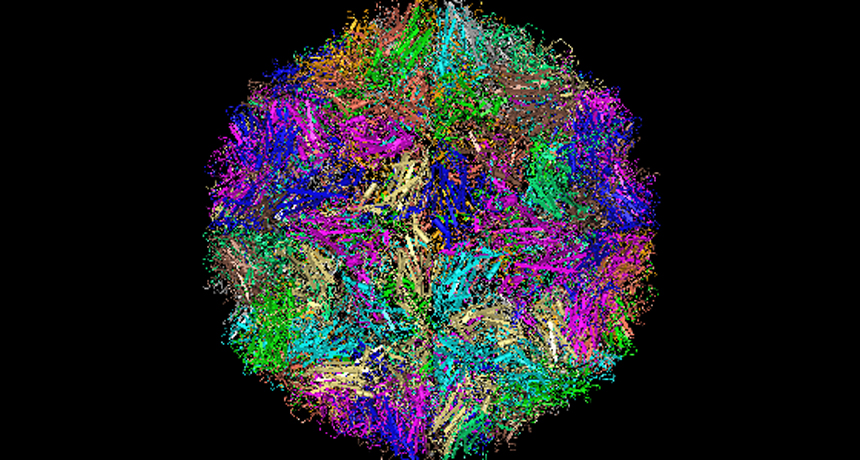Cold noses nurture colds
Cooler temperatures in the nose weaken the body’s defenses against cold viruses

A computer simulation of the outer coating of the virus that causes the common cold. A new study suggests this virus grows better in the nose because the cooler temperatures there prevent the body’s cells from mounting a full defense.
NATIONAL CENTER FOR BIOTECHNOLOGY INFORMATION







